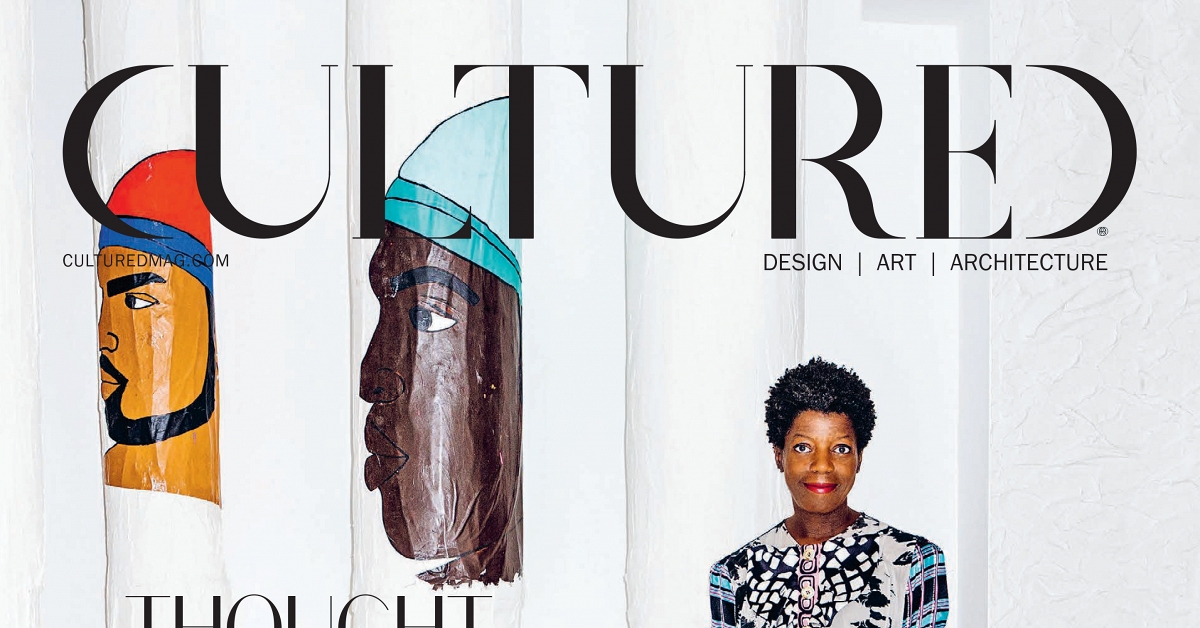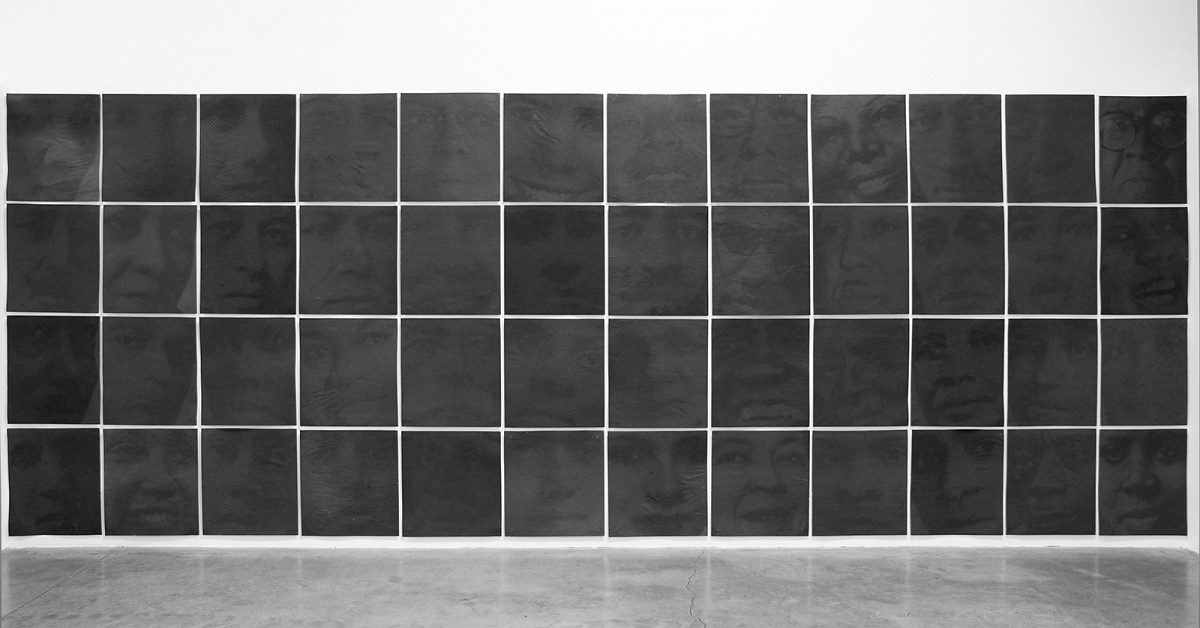Think about power in a new way at ‘Seeing Saying’
The Charlotte Observer / Nov 16, 2016 / by Barbara Schreiber / Go to Original
In the aftermath of a long, brutal presidential campaign – a words-and-images battle over the soul of our country – an exhibition at the Van Every/Smith Galleries at Davidson College suddenly takes on new relevance.
At first blush, “Seeing | Saying: Images and Words” appears to be a comprehensive look at how artists bring together image and text. And while it explores such relationships – with combinations ranging from seamless to arbitrary – there is something deeper going on. Amidst all the meditations, warnings, punchlines and profundities, at least half the works in the show are in some way about power: exerting it, being denied it, reclaiming it or otherwise. Many other works, in their sheer capriciousness or resistance to interpretation, remind us that the truth is not always immediately apparent.
Gallery visitors are welcomed by Santiago Sierra’s “Door Plate (Placa Para Puerto).” An imposing cast aluminum plaque, its text begins, “THIS ENTRANCE IS STRICTLY PROHIBITED” … It then continues with a list of banned people so long and contradictory — including employees, the unemployed, cynics, jokers and women with children — that almost no one can be granted admission.
David Wojnarowicz’s “Untitled (Sometimes I come to hate people)” is a tragic lament at the end of life, as his body is ravaged by AIDS and his community stigmatized. He grasps for words and images, but however powerful they seem to us, they fail him.
In Hank Willis Thomas’ lenticular work, “Le Blanc Imite Le Noir,” what you see depends, literally and figuratively, on where you stand. The text (in translation) oscillates between “white imitates black” and “black imitates white.”
For “FINDERS, KEEPERS,” Shimon Attie photographed two lightboxes, one emblazoned with the word “FINDERS” and the other “KEEPERS,” at the Temple Mount/Noble Sanctuary. Combining conflict and cliché, this work deftly summarizes the endless battle for control of a contested area, as well as our inability to fully comprehend complex situations.
Presented as a separate exhibition, Bethany Collins’ “In Evidence” renders text invisible, to examine how language can reinforce domination. The centerpiece of this austere, intense show-within-a-show is “A Pattern of Practice,” 91 pages of the U.S. Department of Justice’s report on the killing of Michael Brown, in Ferguson, Missouri. The text is not printed, but embossed, so that all the information is there, but it is unreadable.
In other works, Collins uses various approaches to obscure books and paper works. For “Find,” she made use of art-supply brand names, taking a Black Magic eraser to a sheet of American Masters printmaking paper and reducing both to a small mountain of crumbs.
Using a related strategy, in her wall installation “Regola,” Susan Harbage Page begins with texts created by men, including a 19th-century list of rules for Capistrano Friars. She then covers them over, using stereotypically feminine means (including stitchery, bursts of color and to-do lists), thus taking the rigid and rule-bound and rendering it life-affirming and celebratory.
In the video “Penelope’s Odyssey,” Andrea Eis tells the story of Odysseus’ 20-year absence fighting the Trojan War entirely from the viewpoint of his wife, Penelope, who remains behind and fends off suitors. But upon his return, it is Odysseus who must wait for Penelope.
The show includes thought-provoking works that are open to interpretation or have meanings that might be out of reach if not for the accompanying wall text. Whether playful, maddening, or soothing, all have emotional resonance.
Among these are John Baldessari’s “Double Play: Just the Right Bullets,” pairing an early 20th-century painting with a Tom Waits lyric; Raymond Pettibon’s comic-book-like “Plots on Loan I”; and Teresita Fernández’s “Night Writing (Hero and Leander),” a swirl of constellations and Braille that references our desire to seek meaning whether in the stars or on paper.
As you head for the gallery exit, turn around and spend a quiet moment with a modest piece by Christian Marclay. For this simple, unvarnished music box, Marclay composed a melody called “Tinsel” (also the name of the piece) and burnt its anagrams into the surface, so that you see “listen” when the box is opened and “silent” when it is closed. Although the work was commissioned by art collector Peter Norton as a holiday gift, its text now seems ominous as winter nears and uncertainty awaits.
At first blush, “Seeing | Saying: Images and Words” appears to be a comprehensive look at how artists bring together image and text. And while it explores such relationships – with combinations ranging from seamless to arbitrary – there is something deeper going on. Amidst all the meditations, warnings, punchlines and profundities, at least half the works in the show are in some way about power: exerting it, being denied it, reclaiming it or otherwise. Many other works, in their sheer capriciousness or resistance to interpretation, remind us that the truth is not always immediately apparent.
Gallery visitors are welcomed by Santiago Sierra’s “Door Plate (Placa Para Puerto).” An imposing cast aluminum plaque, its text begins, “THIS ENTRANCE IS STRICTLY PROHIBITED” … It then continues with a list of banned people so long and contradictory — including employees, the unemployed, cynics, jokers and women with children — that almost no one can be granted admission.
David Wojnarowicz’s “Untitled (Sometimes I come to hate people)” is a tragic lament at the end of life, as his body is ravaged by AIDS and his community stigmatized. He grasps for words and images, but however powerful they seem to us, they fail him.
In Hank Willis Thomas’ lenticular work, “Le Blanc Imite Le Noir,” what you see depends, literally and figuratively, on where you stand. The text (in translation) oscillates between “white imitates black” and “black imitates white.”
For “FINDERS, KEEPERS,” Shimon Attie photographed two lightboxes, one emblazoned with the word “FINDERS” and the other “KEEPERS,” at the Temple Mount/Noble Sanctuary. Combining conflict and cliché, this work deftly summarizes the endless battle for control of a contested area, as well as our inability to fully comprehend complex situations.
Presented as a separate exhibition, Bethany Collins’ “In Evidence” renders text invisible, to examine how language can reinforce domination. The centerpiece of this austere, intense show-within-a-show is “A Pattern of Practice,” 91 pages of the U.S. Department of Justice’s report on the killing of Michael Brown, in Ferguson, Missouri. The text is not printed, but embossed, so that all the information is there, but it is unreadable.
In other works, Collins uses various approaches to obscure books and paper works. For “Find,” she made use of art-supply brand names, taking a Black Magic eraser to a sheet of American Masters printmaking paper and reducing both to a small mountain of crumbs.
Using a related strategy, in her wall installation “Regola,” Susan Harbage Page begins with texts created by men, including a 19th-century list of rules for Capistrano Friars. She then covers them over, using stereotypically feminine means (including stitchery, bursts of color and to-do lists), thus taking the rigid and rule-bound and rendering it life-affirming and celebratory.
In the video “Penelope’s Odyssey,” Andrea Eis tells the story of Odysseus’ 20-year absence fighting the Trojan War entirely from the viewpoint of his wife, Penelope, who remains behind and fends off suitors. But upon his return, it is Odysseus who must wait for Penelope.
The show includes thought-provoking works that are open to interpretation or have meanings that might be out of reach if not for the accompanying wall text. Whether playful, maddening, or soothing, all have emotional resonance.
Among these are John Baldessari’s “Double Play: Just the Right Bullets,” pairing an early 20th-century painting with a Tom Waits lyric; Raymond Pettibon’s comic-book-like “Plots on Loan I”; and Teresita Fernández’s “Night Writing (Hero and Leander),” a swirl of constellations and Braille that references our desire to seek meaning whether in the stars or on paper.
As you head for the gallery exit, turn around and spend a quiet moment with a modest piece by Christian Marclay. For this simple, unvarnished music box, Marclay composed a melody called “Tinsel” (also the name of the piece) and burnt its anagrams into the surface, so that you see “listen” when the box is opened and “silent” when it is closed. Although the work was commissioned by art collector Peter Norton as a holiday gift, its text now seems ominous as winter nears and uncertainty awaits.






